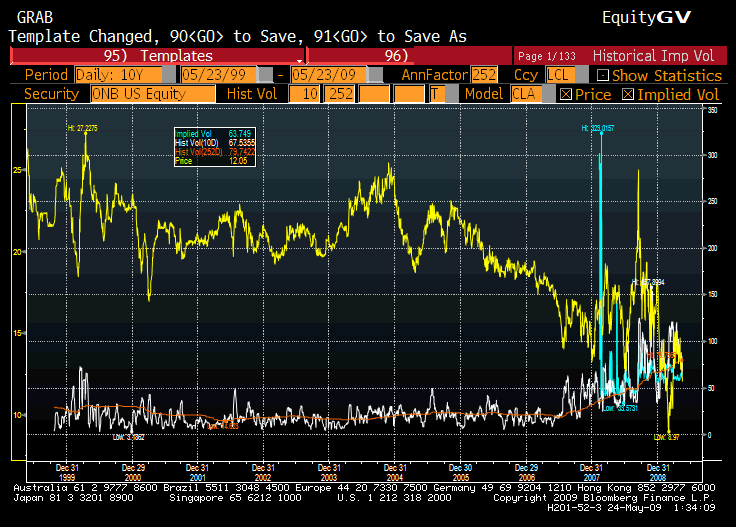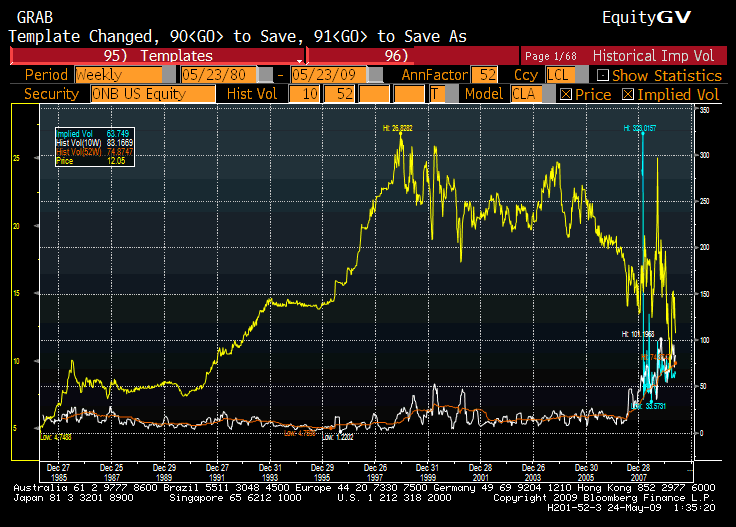Toward a New Concept of Asset Allocation
To my readers: thanks for your responses to yesterday’s article.? I will do a follow up piece soon.? If you have more comments please make them — they will help me with the piece.? Main new concepts coming — need for a deliverable, speculators can’t trade with speculators, only hedgers.
=-=–==-=–==-=-=-=-=-=-=-=-=-=-=–==-=-=-=-
Longtime readers know that I am not a fan of modern portfolio theory.? It is a failure for many reasons:
- It assumes there is one type of risk, the occurence of which is random.
- It assumes that this risk can be approximated by volatility (variance of returns), rather than probability of loss, and the likely severity thereof.
- Mean return estimates, volatility estimates, and correlation coefficient estimates aren’t stable.
- In crises, correlations head to 1 or -1.? Assets divide into safe and “not safe.”
- Problem: some assets always fall into the “not safe” bucket, but what falls into the safe bucket can vary.? Long Treasuries and commodities could be examples of assets that vary during a crisis, depending on the type of crisis.
- It does not recognize multiple time horizons easily.? Bonds held to maturity have a different risk profile than a constantly rebalanced portfolio.
- Risk is the same for all people, and their decision-making time horizons are the same as well.
- And more…
I’m still playing around with the elements of what would make up a new asset allocation model, but a new model has to disaggregate risk into risks, and ask some basic questions:
- Where am I getting paid to take risk?
- Where am I getting paid to avoid risk?
- What aspects of the financial landscape offer the potential for a change in behavior, even if it might take a while to get there?? What major imbalances exist?? Where are dumb people making money?
- Where options are available, how is implied volatility relative to long-term averages?
- What asset classes have momentum to their total returns?
One good example of an approach like this is Jeremy Grantham at GMO.? Asset allocation begins by measuring likely cash flow yields on asset classes, together with the likelihood of obtaining those estimates.? With domestic bonds, the estimates are relatively easy.? Look at the current yield, with a haircut for defaults and optionality.? Still there is room to add value in bonds, looking at what sectors are cheap.
- Are corporate spreads narrow or wide?
- How are residential mortgage bonds priced relative to agency bonds, after adjusting for negative optionality?
- How steep is the yield curve, and where is Fed policy?
- What is the speculative feel of the market now?? Bold? Scared? Normal?
- Related, how are illiquid issues doing?? Are they permafrost, or are molasses not in January?
- If every risk factor in domestic bonds looks lousy, it is time to make a larger allocation to foreign bonds.
- Cash is underrated, and it is safe.
Understanding bonds is an aid to understanding the rest of the market.? The risk factors in play in the bond market are more transparent than elsewhere, but the rest of the markets eventually adjust to them.
With stocks and commodities, the answer is tougher — we have to estimate future demand and supply for commodities.? Tough.? With stocks, we need to estimate future earnings, and apply a P/E multiple that is consistent with the future yield on BBB corporate bonds.? There is some degree of mean-reversion that can help our estimates, but I would not rely on that too heavily.
There is one more aspect to layer in here: illiquidity of equity investments.? With limited partnerships of any sort, whether they are hedge funds, venture capital, private equity, etc., one has to analyze a few factors:
- Where is the sector in its speculative cycle?? Where are secondary interests being sold?
- How much capacity do you have for such investments?? How much of your liability structure is near-permanent?? Is the same true of peer institutions?
- Is the public equity market overvalued or undervalued?? Public and private tend to track each other.
Beyond that we get to the structure and goals of the entity neding the assets allocated.? Time horizon, skittishness, and understanding levels are key for making a reasonable allocation.
This is just my initial brain dump.? It was spurred by this article in the WSJ, on how asset allocation had failed.? Add in the article on immediate annuities, which are a great aid in personal retirement planning.? For those that think that immediate annuities reduce the inheritance to the children, I would simply say that it is longevity insurance.? If the annuitant lives a long time, he might run out of assets, and might rely on his children for help.? The immediate annuity would be there to kick in something.
Why did asset allocation fail in 2008?? All risk assets failed.? Stocks, corporate bonds, venture capital, private equity, CMBS, RMBS, ABS… nothing held up.? There were just varying degress of loss.? Oh, add in Real Estate, and REITs.? Destroyed.? Destroyed…
When the system as a whole has too much leverage, all risky asset classes get affected.? That’s what happened in 2008, as speculators got their heads handed to them, including many who did not realize that they were speculators.






